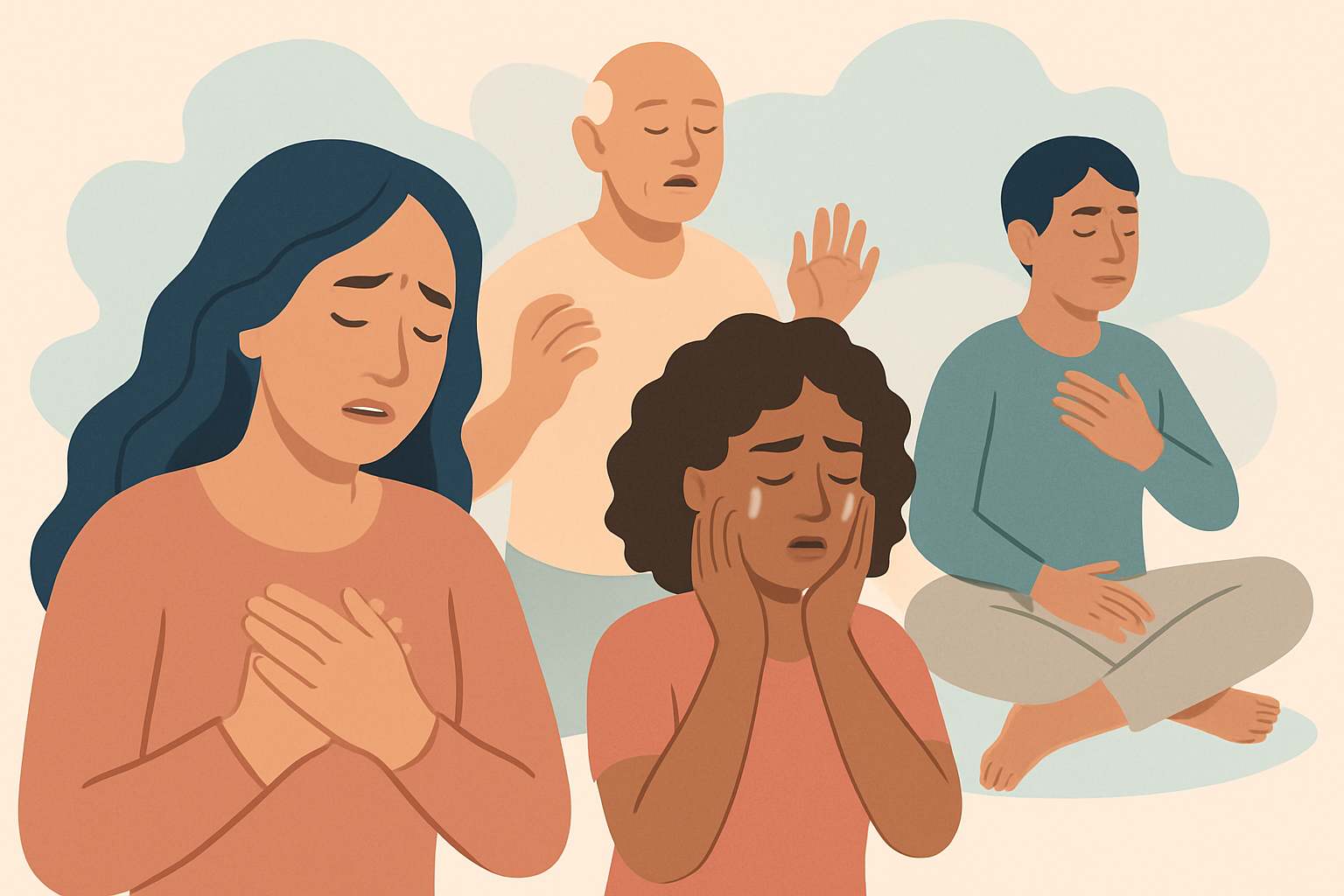
What Are the 7 Symptoms of Complex PTSD You Should Know
Discover the 7 essential symptoms of complex PTSD, a condition caused by prolonged trauma. This guid...
Healing from trauma is often a winding and deeply personal journey, and noticing the signs your body is releasing trauma is a key part of it. It’s not just about sorting through emotions or thoughts—the body tends to chime in too and sends subtle or sometimes not-so-subtle signals that healing is underway. These signs can whisper or shout, showing up as physical sensations or shifts in your emotional landscape. They can be easy to overlook or misinterpret. Keeping an eye on how your body hints that it’s letting go of trauma can help you get a clearer picture of your progress.
Trauma really digs deep into the body as well. When someone experiences trauma, their nervous system tends to go into overdrive and often sparks muscle tension and fluctuations in heart rate or hormone levels. It’s almost like the trauma gets stuck lodged in the body's tissues and nervous system.
The body’s reaction to trauma is deeply connected to the brain and nervous system through natural survival responses like fight or flight. When trauma isn’t fully processed, the body can get stuck in a state of constant alertness or tension. It is always bracing for a threat that has long since passed.
Healing taps into the body’s built-in talent for resetting its nervous system and finding balance again. Techniques like somatic experiencing or trauma-informed therapies gently encourage the release of long-held tension and emotional baggage. Over time this process helps the body reconnect and weave together experiences on a cellular and neurological level and gradually loosen trauma’s grip.
Trauma release tends to look different for everyone but you will often notice some familiar physical or emotional signs popping up along the way. These signs can catch you off guard or feel uncomfortable at times but more often they are your body's way of working through trauma and slowly stitching itself back together.
Spontaneous shaking can really take you by surprise but it’s actually a pretty natural reflex that helps your body let go of stress—kind of like when animals have that little shake-off after a scare. Emotional outbursts might hit like a tidal wave but more often than not, they are a healthy way to sift through those stuck feelings rather than a sign that you’re falling apart. You might notice sensations like heat or cold as your circulation and nerves gradually find their way back to normal.

Helping your body release trauma often starts with creating a sense of safety and kindness through gentle, intentional practices. Carving out a peaceful space and zeroing in on mindful breathing or grounding exercises can really help your nervous system find its calm. Using somatic therapy techniques or guided movement allows stored tension to slowly unwind, while making sure you get enough rest gives your healing process a solid boost.
Supporting trauma release is definitely important but trying to push yourself too hard or rushing through things can sometimes backfire and lead to retraumatization or even more distress. Healing rarely follows a straight path. It often involves a mix of smoother moments and unexpected setbacks. Being mindful of your limits and pacing yourself during practice can really help you avoid overwhelm. It gives both your body and mind the chance to adjust at their own pace.
Trauma release can sometimes feel overwhelming or downright distressing, especially when those symptoms ramp up and interfere with your everyday routine. If you find your anxiety, flashbacks, dissociation or physical pain shifting from a mild nuisance to something tough to keep in check, it’s a good idea to lean on trauma-informed professionals.
Healing from trauma doesn’t have to be a lonely battle. A compassionate professional can help you feel safe, gently guide your body through its natural healing rhythms, and stand by your side every step of the way. Taking that first step to reach out is no small feat—it’s a brave, meaningful milestone in your journey to recovery. — Dr. Amelia Rodriguez, Trauma Therapist
Many individuals often hope trauma release will be a quick fix or they might worry that strong symptoms mean something’s seriously off. Healing from trauma tends to wander along a winding path, full of highs and lows like a rollercoaster you didn’t exactly sign up for. The physical and emotional reactions you experience are often signs your body is releasing trauma; the physical symptoms usually show the body doing its best to adjust, rather than signaling fresh damage, while the emotional reactions are healthy ways to let feelings out, not signs of weakness or failure.
Yes, this is pretty common in the healing world and rarely moves in a neat straight line. As your body works through stored trauma, you might feel more emotionally sensitive or physically uncomfortable for a spell. Believe it or not these ups and downs often signal progress not backsliding. The key is to be gentle with yourself and move at a pace that doesn’t leave you wiped out. And hey if things ever feel too much to handle reaching out for professional help is always smart.
Symptoms like trembling or tingling often point to your nervous system adjusting. Usually these sensations come and go and are tied to emotional processing. That said if a symptom lingers becomes intense or bothers you too much it’s worth checking with a healthcare provider. Better safe than sorry right?
First off cut yourself some slack—this is a normal way your body lets out built-up emotion. If possible slip away to a quiet private spot like a restroom or your car. Grounding techniques can be a lifesaver such as tuning into your breath or feeling your feet firmly on the ground. And remember you don’t owe anyone an explanation. Let the wave pass without beating yourself up—it’s part of being human.
There’s no one-size-fits-all timeline since healing is unique and moves in cycles not a straight shot. How long it takes depends on the type of trauma your background and your support system. The best approach is to embrace steady gentle practices that let your body heal at its natural pace instead of focusing on a fixed finish line.
It’s wise to avoid pushing yourself too hard or forcing any kind of release since that often backfires and leaves you overwhelmed. On the flip side holding in your emotions can slow things down. A better plan is to create a safe nurturing space for yourself practice gentle self-care and pay attention to what your body needs whether that’s rest nourishment or kindness.

Discover the 7 essential symptoms of complex PTSD, a condition caused by prolonged trauma. This guid...

Language processing disorder impacts how children understand and use language. Learn to recognize ea...

Contempt is a toxic emotion that can erode love and respect in relationships. Discover what contempt...

Learn advanced tips and expert techniques to help young athletes build mental toughness, stay focuse...